The all-new 2020 Buick Encore GX (Fig. 1) is a crossover sport utility vehicle designed and manufactured globally and sold worldwide. It slots in the Buick lineup between the smaller Encore and larger Envision and Enclave models.
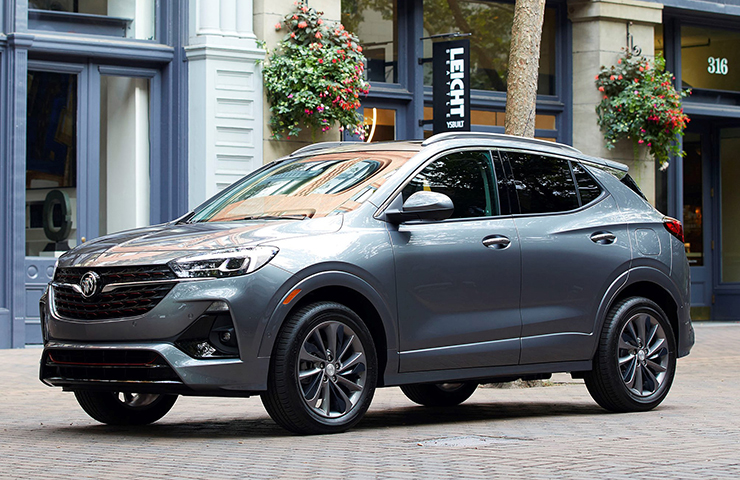 Fig. 1
Fig. 1
The Encore GX features two new, fuel efficient, turbocharged 3-cylinder engines, making it more powerful than the smaller Encore. Front-wheel drive models are equipped with a continuously variable transmission (CVT) while all-wheel drive models feature a Hydra-Matic 9-speed automatic transmission with a selectable one-way clutch.
In addition, it’s packed with new technologies and new active safety features. These six safety features are standard on all trim levels:
- Forward Collision Alert
- Automatic Emergency Braking
- Front Pedestrian Braking
- Lane Keep Assist with Lane Departure Warning
- Following Distance Indicator
- IntelliBeam headlamps with automatically adjusting high/low beams
Powertrains
The 2020 Buick Encore GX front wheel drive model features the turbocharged 1.2L inline 3-cylinder engine (RPO LIH) paired with the VT40 continuously variable transmission (RPO MRG). The new engine produces 137 horsepower and 166 lb.-ft. of torque.
All-wheel drive models of the Encore GX (Fig. 2) feature the turbocharged 1.3L engine (RPO L3T). It is an advanced, power-dense, inline three-cylinder generating 155 horsepower and 174 lb.-ft. of torque, equating to 115 horsepower per liter engine. It is built off the new cylinder set strategy (CSS) engine architecture, optimizing efficiency and performance.
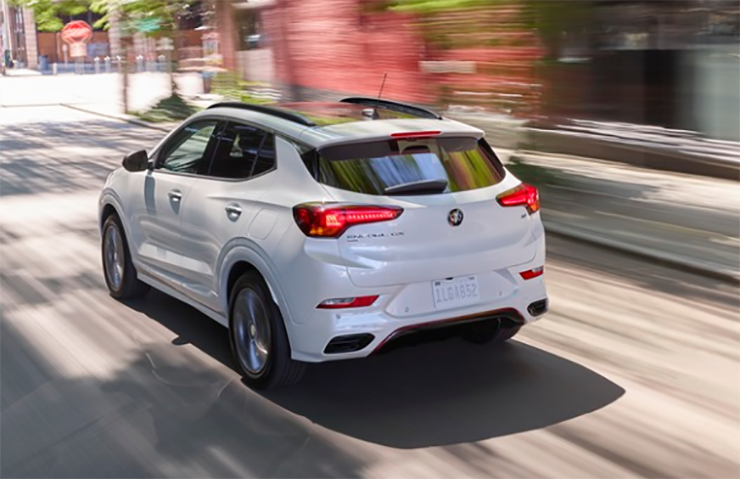 Fig. 2
Fig. 2
All-Wheel Drive
The driveline in the Encore GX uses either a front-wheel drive or an all-wheel drive (AWD) configuration. Both configurations use a transverse mounted engine and transmission to transfer power through the front wheel driveshafts to the front wheels.
The AWD configuration adds an active transfer case (Fig. 3) that splits power between the two-piece rear propeller shaft and the front wheel driveshafts. The one-speed transfer case bolts to an adapter plate on the right side of the transmission. The housing, bearings, and gears are not serviceable. Internal damage to the unit requires replacement of the assembly.
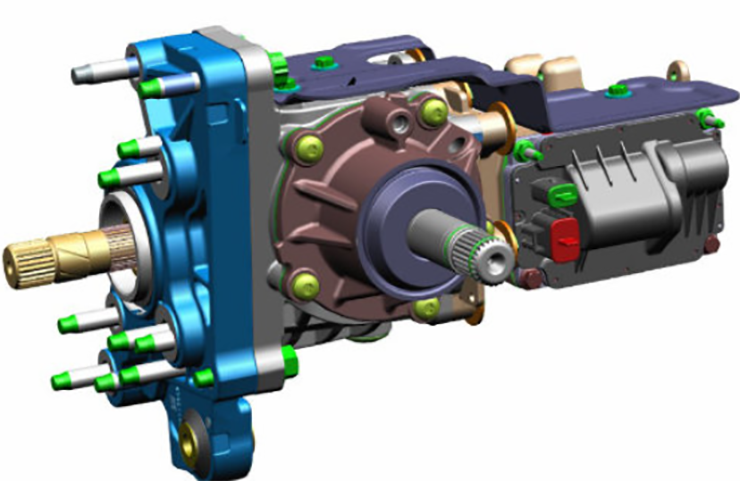 Fig. 3
Fig. 3
The AWD system has a driver-selectable disconnect and has a single-clutch rear drive unit. The rear drive unit design allows for independent and balanced torque distribution between the front and rear wheels in an up to 50-50 split under certain driving conditions.
Chassis Features
The Encore GX features robust front and rear frames, a MacPherson strut front suspension (Fig. 4), and a semi-independent twist-beam rear suspension.
Adjusting the front camber may be necessary if the wheel alignment is out of specification. This is accomplished using a service bolt in place of the upper strut to steering knuckle bolt. The new bolt is 2 mm smaller in diameter to allow for adjustment. Do not file the strut holes to attempt to make an adjustment.
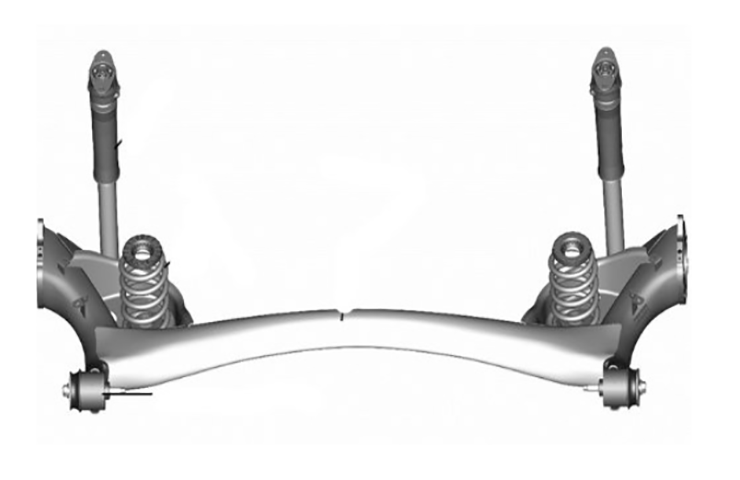 Fig. 4
Fig. 4
The rear suspension features a semi-independent twist-beam axle with coil springs, shock absorbers, and integral trailing arms. Rear suspension angles are non-adjustable.
All Encore GX models also are equipped with front and rear disc brakes with pad wear sensors. (Fig. 5) Floating single-piston calipers mount in brackets with guide pins. The front brake system also includes the electric parking brake motors.
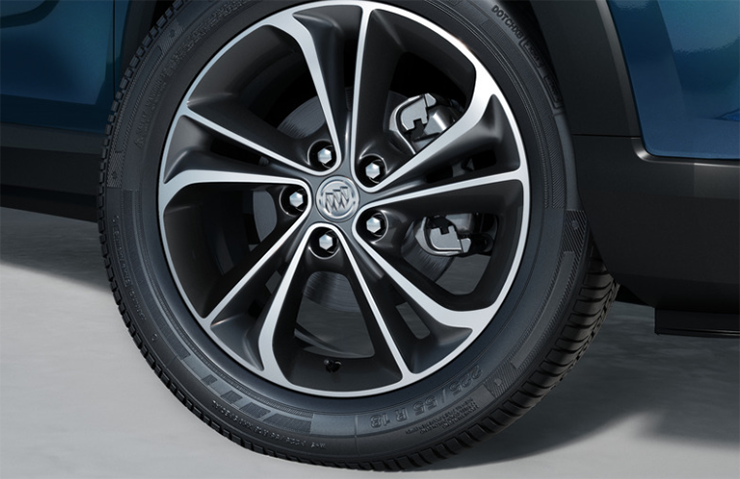 Fig. 5
Fig. 5
TIP: It is important to use brake fluid with the specific properties recommended by GM. Always use DOT 4 brake fluid when servicing the brake system on the Encore GX.
The brake lining wear sensor system estimates the remaining life of the front and rear brake pads, which displays a percentage and distance for each axle when the feature is active in the Driver Information Center (DIC). When the brake control system determines the brake pads need replacement, a message displays in the DIC.
The brake system control module has one analog input for the left front brake pad wear sensor and one analog input for the right rear brake pad wear sensor. (Fig. 6) It supplies voltage to the brake pad wear sensors, diagnoses any issues with the power supply, and signals if a failure is detected in the supply voltage system.
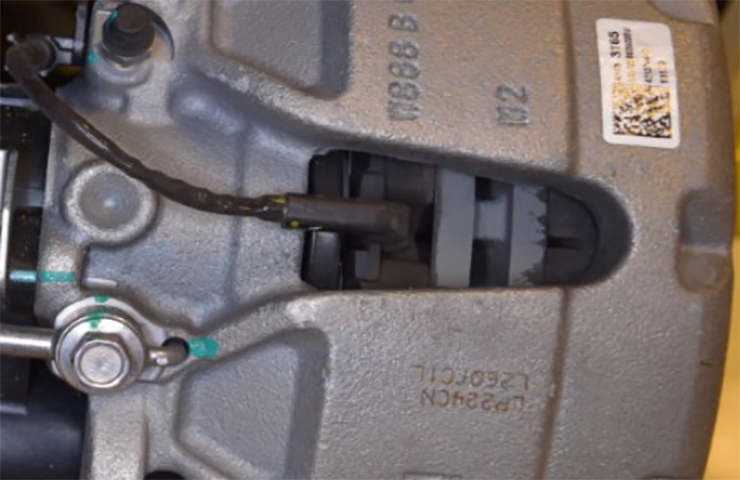 Fig. 6
Fig. 6
The lining wear sensor system can be disabled, which may be necessary if aftermarket brake pads without wear sensors are installed. Disable the wear sensor system by accessing the DIC features with the control buttons on the steering wheel and selecting Disable. When the system is turned off, the front and rear brake pad life percentages will not display.
After replacing the brake pads, perform the brake pad life monitor reset procedure: Display the brake pad life on the DIC, select front or rear pads, and then select Yes on the confirmation message. Repeat the reset procedure for pads on the other axle if replacement was performed.
Head-Up Display
The Head-Up Display (HUD) projects an image on a retractable, transparent screen on top of the instrument panel. (Fig. 7) The image location and brightness are adjustable using the HUD switch on the left side of the instrument panel. The HUD switch is a multiplexed switch that controls the Head-Up Display based on driver inputs. The switch is made up of a resistor ladder and four switches: ON/OFF, Dim +/-, Up/Down, and Page.
The information displayed on the HUD is received from other modules via serial data. The driver can select from several different display configurations using the Info switch. The HUD screen also can be raised/lowered using the Info switch.
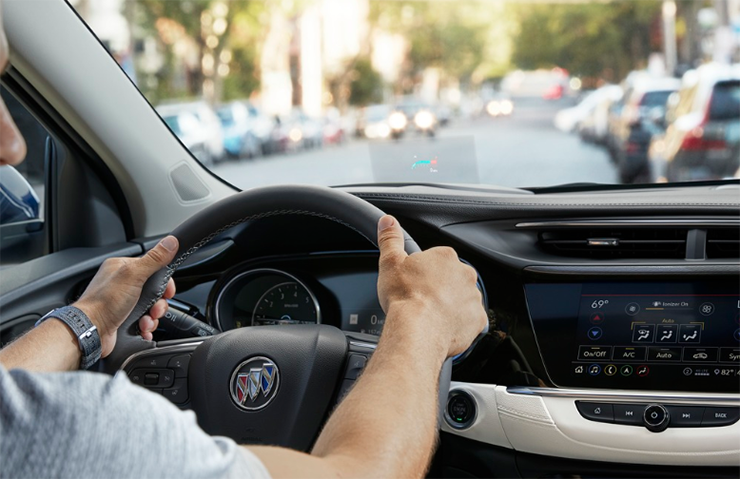 Fig. 7
Fig. 7
Driver Assistance Features
Available driver awareness and driver assistance packages offer advanced safety technology such as lane departure warnings, blind zone alerts, collision alerts, and rear cross traffic alerts as well as a rear vision camera and pedestrian impact detection. Some of these features can be turned on/off using the switches on the center console. (Fig. 8)
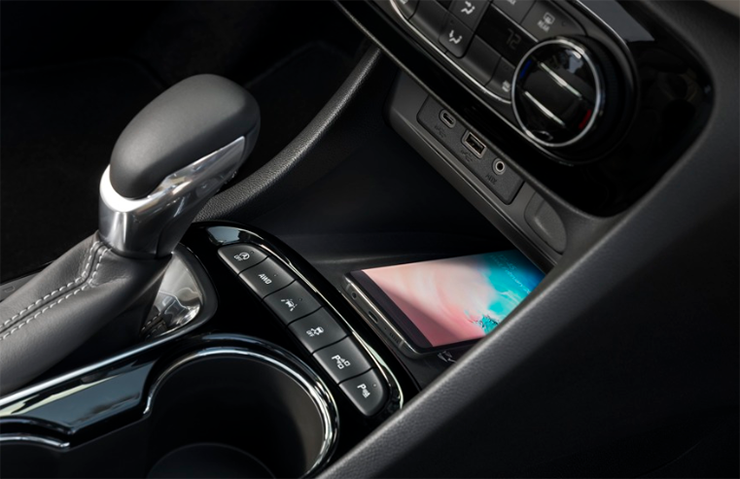 Fig. 8
Fig. 8
Rear Cross Traffic Alert – The system uses radar sensors to warn the driver of approaching cross traffic when backing out of a parking spot. This system uses the same side radar sensors that are used for the side blind zone alert.
Side Blind Zone Alert – The system detects and reports vehicles or other moving objects of interest on either side of the vehicle. The system alerts the driver with a visual display on the outside mirrors.
Lane Departure Warning – The camera-based lane detection system warns the driver of un-signaled lane changes. The system uses the front view camera, identifies traffic lane markings, and provides audible alerts if the vehicle begins to drift out of the lane without the turn signal activated. The system operates at speeds of 37 mph (60 km/h) or greater.
Front View Camera – The front view camera is located behind the windshield, near the rearview mirror. Looking out at the road ahead, it detects visual cues, such as lane markings and vehicles directly ahead, within a distance of approximately 197 ft (60 m), and communicates with the instrument cluster via serial data to illuminate the appropriate amber or green vehicle ahead indicator and collision alert indicators. The front view camera also communicates via serial data with the infotainment system to request audible alerts.
Forward Collision Alert – The system sends a warning to the driver when there is a potential collision risk using the forward view camera to detect vehicles directly ahead. When equipped with adaptive cruise control, the forward collision alert uses the front long-range radar module and two front short-range radar modules in addition to the forward view camera.
Front and Rear Parking Assist – The front and rear parking assist system identifies and notifies the driver using an audible beep of an object in the vehicle’s path when moving in a forward or reverse direction at speeds less than 5 mph (8 km/h). Eight sensors determine the distance and location of the object: four in the rear bumper and four in the front bumper.
Hands-Free Power Liftgate
The available power liftgate features hands-free liftgate operation. The system uses a motion sensor located under the left rear bumper fascia and, if equipped, an optional logo projector. (Fig. 9) Kicking your foot straight up under the sensor area near the projected logo will activate the liftgate.
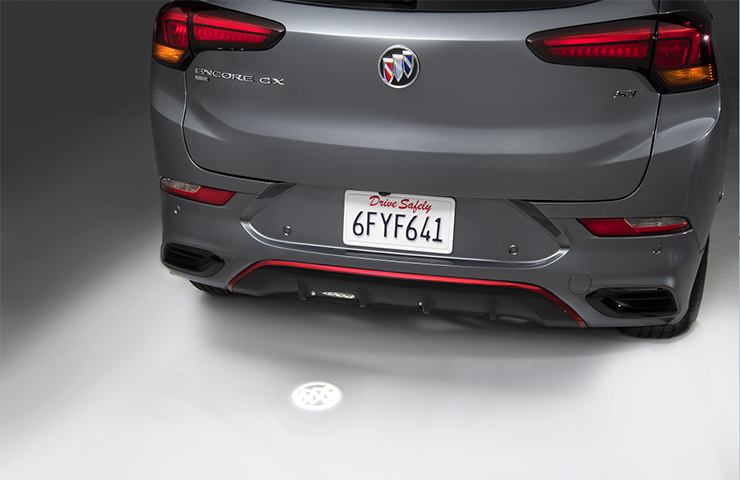 Fig. 9
Fig. 9
For additional information on the all-new 2020 Encore GX, refer to Bulletin #20-NA-032.
– Thanks to Frank Jakubiec and Matt Bunting


















